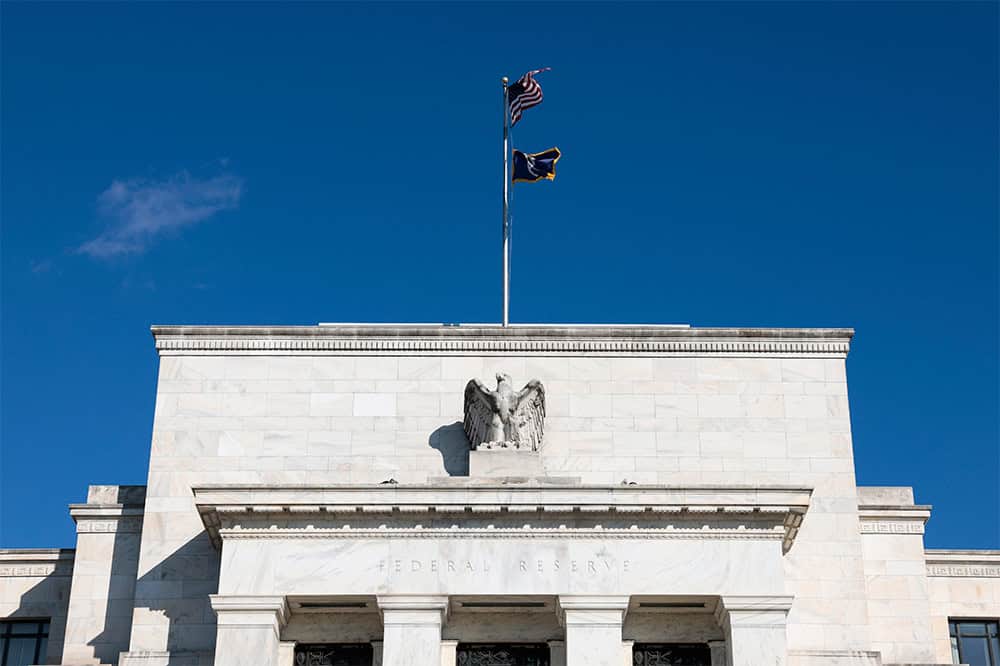Recently, the United States has been experiencing an unusual and troubling phenomenon — the annual deficit is high even though the unemployment rate is low.
A low unemployment rate usually signals a healthy economy, contributing to conditions that encourage lower deficits. When the unemployment rate is low, the federal government’s balance sheet benefits in two ways. First, more people are working, so the federal government spends less money on relief programs known as automatic stabilizers, such as unemployment insurance, Medicaid, and the Supplemental Nutrition Assistance Program. Second, the federal government collects more money from taxes due to higher payrolls. Lower spending on automatic stabilizers, paired with higher revenues as more people are employed, should generate lower deficits.
That relationship is not in effect today. In fiscal year 2024, the unemployment rate averaged 3.9 percent, well below its 50-year average of 6.2 percent. However, the deficit last year was 6.4 percent of gross domestic product (GDP), significantly above its 50-year average of 3.8 percent. The average deficit when the unemployment rate was low (defined as below 6 percent) between 1973 and 2024 was 2.7 percent of GDP.
The high deficit in 2024, which is anticipated to grow in upcoming years, results in part from a structural imbalance between spending and revenues; that imbalance is driven by demographic factors, rising healthcare costs, high interest rates on the growing debt, and insufficient revenues to cover promises that have been made.
Observers of the fiscal situation have highlighted the dangerous anomaly of running high federal deficits during a period of low unemployment. For example, referring to the nearly $2 trillion deficit in fiscal year 2024, Jessica Riedl in the Washington Post said, “A [nearly] $2 trillion deficit is bad news during a recession and war, but completely unprecedented during peace and prosperity.”
An essay in The Economist noted, "Over the past 12 months the federal government has spent $2 [trillion], or 7.2% of GDP, more than it has raised in taxes, after stripping out temporary factors. Usually such a vast deficit would be the result of a recession and accompanying stimulus. Today the lavish borrowing comes despite America’s longest stretch of sub-4% unemployment in half a century.”
In Forbes, Ivan Illan stated, "Such levels [of public debt] are not only fiscally dangerous to the integrity of the U.S. dollar, but also limit our government’s ability to deftly maneuver to address future crises. Addressing this issue should be a top priority for our government leaders.”
As the old saying goes, the time to save for a rainy day is when the sun is shining. The fact that the deficit is growing at a time when it usually would recede should be a troubling warning sign to policymakers. There is clear evidence that lawmakers must take action on the structural imbalance built into the federal budget.
Image credit: Photo by Emily Elconin/Getty Images
Further Reading
Growing National Debt Sets Off Alarm Bells for U.S. Business Leaders
Debt rising unsustainably threatens the country’s economic future, and a number of business leaders have signaled their concern.
What Is R Versus G and Why Does It Matter for the National Debt?
The combination of higher debt levels and elevated interest rates have increased the cost of federal borrowing, prompting economists to consider the sustainability of our fiscal trajectory.
High Interest Rates Left Their Mark on the Budget
When rates increase, borrowing costs rise; unfortunately, for the fiscal bottom line, that dynamic has been playing out over the past few years.


